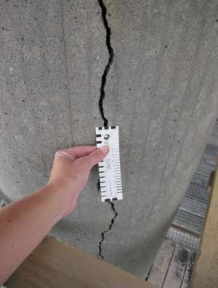Elgeseter bridge (case study)
Object description
(No object description available.)
Object analysis
A capacity control (ULS) has been carried out in both the bridge superstructure and the columns for both for the original design loads and for additional loads from Alkali-Silica Reactions. The original loads and load factors are according to Handbook R412 ”Bridge Classification”. The load actions from Alkali-Silica Reactions are based on ”Alkali Silica Reactions - Guidelines for Constructive Analysis”, issued by the Directorate of Public Roads. The capacity control are performed according to the Norwegian Standard, NS 3473: ”Design of concrete structures”. Two computing programs have been used in this thesis, Abaqus CAE and Robot. Robot is a frame program that is used to find the design loads from the ordinary loads on the bridge, as well as the external loads actions from Alkali-Silica Reactions. Abaqus is a finite element program that is used to calculate the effect of the expansion from the Alkali Silica Reactions in several directions.
Object state
The concrete in the bridge has shown to contain Alkali-Silica Reactive deposits and several damages associated with Alkali-Silica Reactions have been observed. Among other things, an elongation of the superstructure has been measured. This has also led to an inclination of the columns. Due to this, the bridge may be exposed to significant additional forces. Alkali reactions are a decomposition mechanism due to chemical reactions between alkali-reactive aggregates and alkalis in the cement paste. The reaction product is an alkali gel that swells during water absorption. This leads to expansion of the concrete and gradual internal and external cracking.
Images
Documents
This case study was contributed by Daniel Cantero of Norwegian University Of Science And Technology. Last edited by technical staff.


